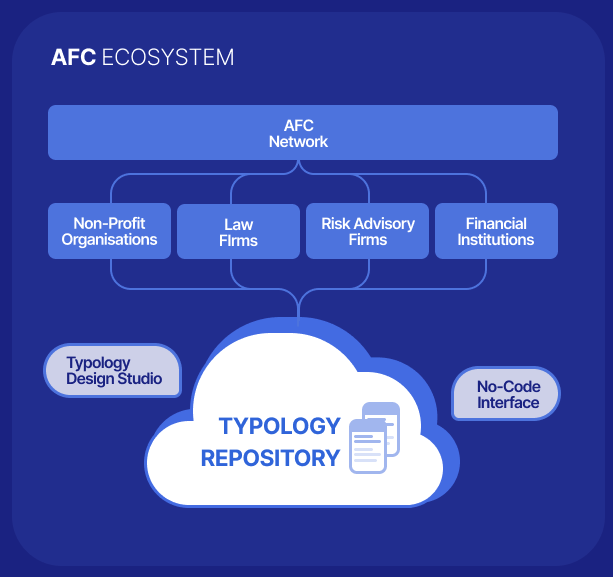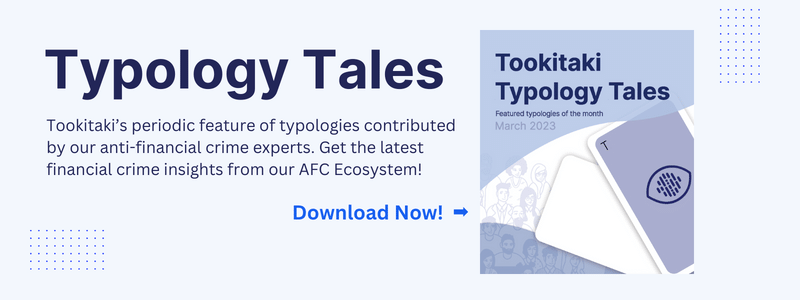Drug trafficking and money laundering are serious global issues with significant economic and social consequences. The United Nations Office on Drugs and Crime (UNODC) estimates that the illegal drug trade generates over $320 billion annually, making it one of the largest illicit industries in the world. Drug trafficking is often closely linked to money laundering, as the illegal proceeds must be laundered to conceal their origin and integrate them into the legitimate financial system.
To combat these crimes, traditional approaches have often focused on strict regulatory compliance and the use of rigid rules-based systems. However, such approaches have limitations, are siloed, and are often ineffective in detecting new or evolving threats. Instead, community-based approaches that foster collaboration and collective intelligence have proven to be more effective in identifying and combating these crimes.
This post will explore the importance of community-based approaches in fighting drug trafficking and money laundering and highlight the role of Tookitaki's Anti-Financial Crime (AFC) Ecosystem in supporting these efforts.
Understanding Drug Trafficking
Drug trafficking is a global illicit trade involving the cultivation, manufacture, distribution, and sale of substances that are subject to drug prohibition laws. The United Nations Office on Drugs and Crime (UNODC) is monitoring global illicit drug markets to gain a comprehensive understanding of their dynamics. Trafficking routes are also used to transport other illicit products, and drug trafficking is often associated with other forms of crime, such as money laundering or corruption.Drug trafficking organisations have a structure similar to that of legitimate business organisations. They can be divided into four types: family-based, hierarchical, market-oriented, and network-oriented. Drug trafficking is a crime that can involve serious violence, and substance use disorders are common among sex trafficking victims, who may be lured, coerced, or controlled by drugs or alcohol.
Some key statistics on global drug trafficking
It is important to note that drug trafficking statistics are difficult to obtain, as illegal activities are often concealed and underreported. Nevertheless, the following statistics can provide insight into the global drug trade and its impact on individuals and societies.
- According to a report by the United Nations Office on Drugs and Crime (UNODC), the estimated number of illegal drug users worldwide in 2020 was almost 275 million people, while over 36 million people suffered from drug use disorders.
- At current levels, world heroin consumption (340 tons) and seizures represent an annual flow of 430-450 tons of heroin into the global heroin market.
- The global market in cocaine is valued at between $94 billion and $143 billion, making it the second largest drug market after that of cannabis (valued at between $183 billion and $287 billion).
- Afghanistan remains the most significant drug trafficking country, being the biggest producer of opium worldwide, the source of 90% of the world's illicit opium and heroin.
- The majority (84.9%) of traffickers were male with an average age of 36.3, and roughly 70% of all offenders were U.S. citizens, and almost half (49.4%) had little or no prior criminal history.
Drug Trafficking and Money Laundering
Drug trafficking and money laundering are closely linked criminal activities, with drug traffickers often using the financial system to launder their illegal profits. The global trade in illicit drugs is estimated to be worth around $400 billion annually. Drug profits moving through the financial system are estimated to be as high as $100 billion per year.
Drug traffickers often use various methods to move narcotics, including bulk cash smuggling, and rely on multiple money laundering methods. Drug trafficking organizations communicate with money laundering organizations to receive large quantities of cash to be laundered.
To combat drug trafficking and money laundering, law enforcement agencies use multiple collaborative and information-sharing mechanisms, including task forces, to investigate and prosecute drug and other crimes. Virtually all countries have implemented criminalisation and regulations aimed at deterring money laundering and facilitating the detection of criminal activity.
The Importance of a Community-based Approach to Fighting Drug Trafficking
Traditional approaches to fighting drug trafficking and money laundering, such as relying solely on law enforcement agencies, are insufficient to address the scale and complexity of these crimes. Criminal networks involved in drug trafficking and money laundering often operate across borders and use sophisticated techniques to evade detection and prosecution. To effectively combat these crimes, a community-based approach that involves various stakeholders, including local law enforcement agencies, private sector organizations, and civil society groups, is crucial.One of the key benefits of a community-based approach is increased information sharing and collaboration. By involving a diverse set of stakeholders, different perspectives and expertise can be brought to the table, leading to a more comprehensive and nuanced understanding of the problem. This, in turn, can lead to more effective strategies and interventions.
Moreover, community-based approaches can help build trust and legitimacy with affected communities, especially those historically marginalised or mistrustful of law enforcement. By involving these communities in decision-making and leveraging their knowledge and resources, law enforcement agencies can improve their ability to prevent and respond to drug trafficking and money laundering activities. Ultimately, a community-based approach to fighting drug trafficking and money laundering can lead to more effective, sustainable, and equitable outcomes.
Tookitaki's AFC Ecosystem
Tookitaki is a pioneer in the fight against financial crime, leveraging a unique and innovative approach that transcends traditional solutions. The company's Anti-Money Laundering Suite (AMLS) and Anti-Financial Crime (AFC) Ecosystem work in tandem to address the limitations of siloed systems in combating money laundering.
The AFC Ecosystem is a community-based platform that facilitates sharing of information and best practices in the battle against financial crime. Powering this ecosystem is a Typology Repository, a living database of money laundering techniques and schemes. This repository is enriched by the collective experiences and knowledge of financial institutions, regulatory bodies, and risk consultants worldwide, encompassing a broad range of typologies from traditional methods to emerging trends.

The AMLS is a software solution deployed at financial institutions. It is an end-to-end operating system that modernises compliance processes for banks and fintechs. AMLS collaborates with the AFC Ecosystem through federated machine learning. This integration allows the AMLS to extract new typologies from the AFC Ecosystem, executing them at the clients' end to ensure that their AML programs remain cutting-edge. The use of federated machine learning allows multiple institutions to collaborate and share information while maintaining data privacy and confidentiality. The system can learn from the collective intelligence of multiple organisations, making it more effective in detecting and preventing financial crimes.
The AFC Ecosystem's collective intelligence approach can help organisations identify and track criminal networks involved in drug trafficking and money laundering. By sharing information and collaborating, institutions can build a more comprehensive understanding of these networks and their activities, making it easier to identify and prosecute those involved.
From Traditional to Innovative: The Future of Fighting Drug Trafficking and Money Laundering
In conclusion, drug trafficking and money laundering remain significant global issues that require urgent attention. Traditional approaches to combatting these crimes are no longer sufficient, and financial institutions need to consider implementing community-based approaches. This requires increased collaboration, information sharing, and the use of innovative technologies.
Tookitaki's AFC Ecosystem and AMLS provide a promising solution, utilising cutting-edge technologies and collective intelligence to improve the detection and prevention of financial crimes. By adopting such innovative approaches, financial institutions can play a crucial role in the fight against drug trafficking and money laundering. We urge financial institutions to learn more about these solutions and take action towards implementing them.
Anti-Financial Crime Compliance with Tookitaki?




